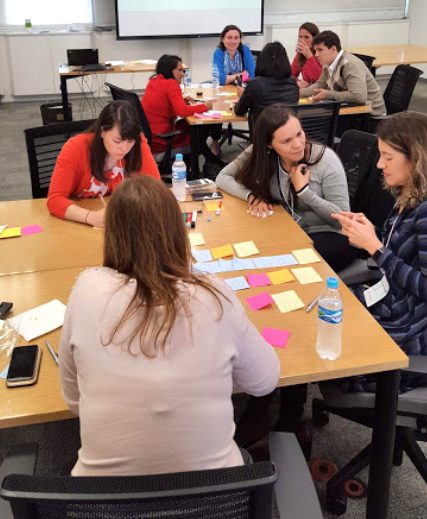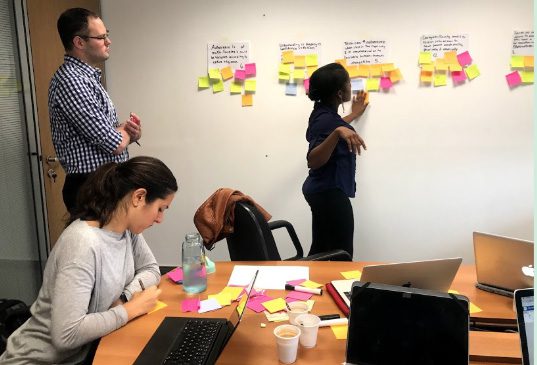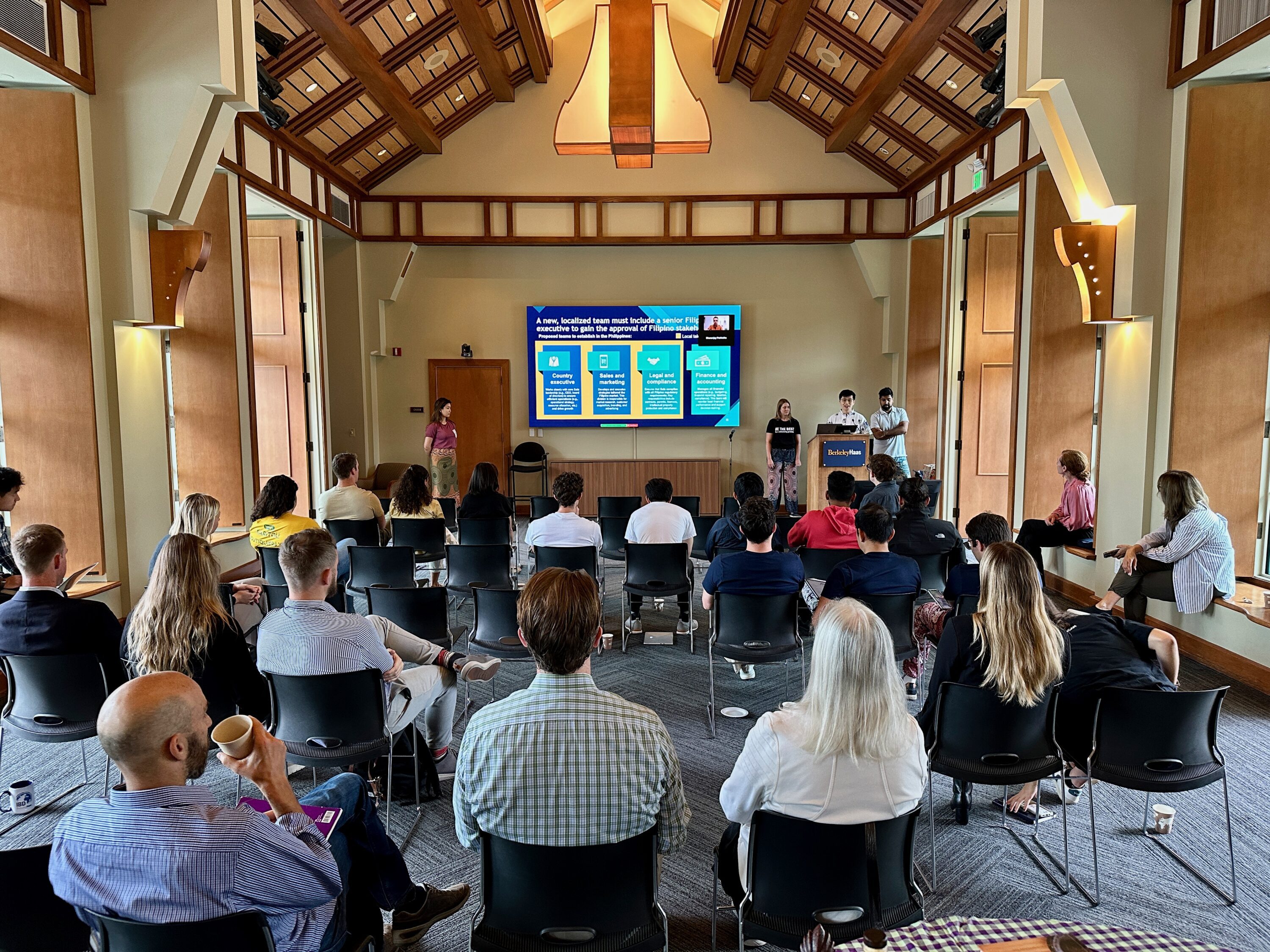Using Human-Centered Design to Improve Patients’ Lives
By Melea Atkins, Kathryn Balestreri, Bree Jenkins, Ben Lauing, and Hannah Levinson
There were bright pink and orange and blue post-its everywhere. It looked just like the Innovation Lab at Haas had looked weeks before as we ran through an exercise during our Problem-Finding, Problem-Solving class. But we were 6,500 miles away from Haas, many of the post-its were written in Portuguese, and the stakes were high.
The São Paulo IBD team was facilitating a three-hour rapid ideation workshop at the major pharmaceutical company Novartis, leading a group of 16 senior-level employees through the human-centered design cycle to generate ideas about why patients don’t adhere to their medication. Our fear that directions would be lost in translation given the language barrier was immediately assuaged as people openly shared personal journeys with chronic illness and others wrote down observations. One woman shared her personal experience being treated by a physician for a chronic illness. He chose not to pursue aggressive treatment because he didn’t want to impose physical pain on his patient. She was left feeling out of control over her own life, and her emotional and physical suffering only increased over time. This led to an insight around shared decision-making and that a personal physician relationship is foundational to patient engagement and medication adherence.
After the workshop, we received such a thoughtful WhatsApp message (the primary mode of communication – even for Novartis professionals!): This was so great, I’ve worked here for so long but I forgot that I’ve been the patient too.
Leading this workshop was a transformational Haas experience. When facilitating, we were pushed to command a room of people who were senior to us, whose primary language was different from ours, and who had no prior exposure to design thinking tools. The workshop also strengthened the bond of our IBD team, as we all worked together to ensure the success of the experience. Our team was especially fortunate to have Kathryn Balestreri, who brought design thinking expertise from her work as an innovation consultant and through Haas at Work.

This human-centered design approach landed well with the Novartis team, and we realized how well it lent itself to the overarching goal of our project: helping patients better adhere to heart failure medication. Through our research and 71 interviews with subject matter experts, physicians, startups, and heart failure patients over the course of our project, it was abundantly clear that we wouldn’t be able to identify the root cause of non-adherence to heart failure medication without truly understanding why patients behave the way they do. Thus, when it came to generating solutions for Novartis, we generated six key insights about how we might positively impact patient behavior and improve adherence, used these insights to power ideas, and ultimately converged on one idea to create a prototype and action plan for Brazil. We called the prototype “Rede Integrade de Acolhimento” (RIA), which means “smile” in Portuguese. This is a title that a Novartis employee generated during the final prototyping stage of the ideation workshop.
In our final client call, the project manager requested materials about leading human-centered design workshops, because she wanted to replicate the workshop for Novartis teams in other Latin American countries. Hearing not only that Novartis was interested in our ideas, but also that they wanted to use some of the tools that we’d brought felt like a true success.





